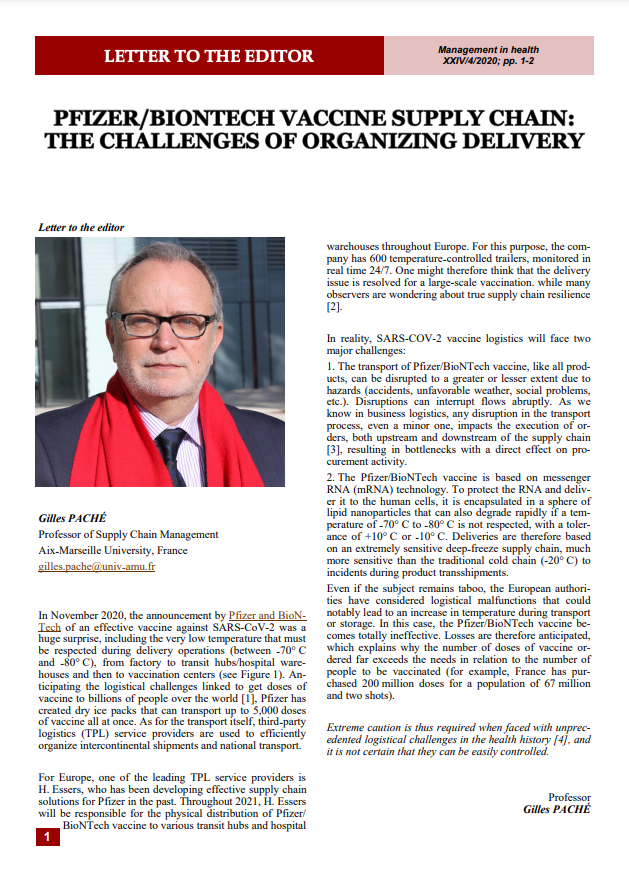Abstract
Gilles PACHÉ
Professor of Supply Chain Management
Aix-Marseille University, France
In November 2020, the announcement by Pfizer and BioNTech of an effective vaccine against SARS-CoV-2 was a huge surprise, including the very low temperature that must be respected during delivery operations (between -70° C and -80° C), from factory to transit hubs/hospital warehouses and then to vaccination centers (see Figure 1). Anticipating the logistical challenges linked to get doses of vaccine to billions of people over the world [1], Pfizer has created dry ice packs that can transport up to 5,000 doses of vaccine all at once. As for the transport itself, third-party logistics (TPL) service providers are used to efficiently organize intercontinental shipments and national transport.

